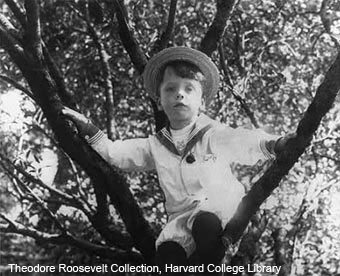Family Album
Alice
(1884-1980)
The daughter of Theodore Roosevelt and Bostonian Alice Hathaway Lee Roosevelt, Alice was born in New York City on February 12, 1884. Two days later, her mother and her maternal grandmother died, and Theodore asked his sister Anna to raise the infant. When he married Edith Kermit Carow in December 1886, the couple decided that Alice should join them. Thus, Alice was the older stepsister to Theodore Jr., Kermit, Ethel, Archibald, and Quentin. Alice was an autodidact who, upon becoming First Daughter in 1901, rose to international celebrity status because of her youthful ebullience and daring actions. She drove unchaperoned, smoked cigarettes, carried a garter snake and a copy of the Constitution, and was a successful private diplomat on a five-country Asian tour for her father in 1905.
Alice’s 1906 White House wedding to Ohio Congressman Nicholas Longworth initiated her six decades of social sway over official Washington. Her lifelong passion for politics drew the powerful to her. She supported T.R.’s 1912 Bull Moose campaign, worked quietly to defeat the League of Nations, criticized New Deal policies in a syndicated newspaper column, networked at both parties’ political conventions for years, and became famous for her bon mots. In 1931, she gave birth to her only child, Paulina. Known as “the other Washington Monument,” Mrs. Longworth supported the Republican Party, loved poetry and current events, and doted on her granddaughter Joanna Sturm. Alice died in 1980, having outlived all of her step-siblings.
She is buried in Washington’s Rock Creek Cemetery.
Stacy A. Cordery
Author of “Alice: Alice Roosevelt Longworth,
from White House Princess to Washington Power Broker”
Professor of History
Iowa State University

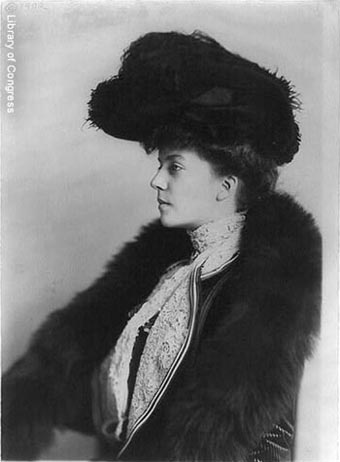
Theodore Jr.
(1887-1944)
A more somber and private man than his famous father, Ted Jr. struggled most of his life to honor his father’s name while becoming his own man. He succeeded. Valor, decency, and humility all belonged to him, and he never let those colors down for himself or the rest of us.
Ted Jr. was the first-born child of Theodore and Edith Kermit Carow Roosevelt. After his service in World War I, he co-founded the American Legion and was elected to the New York State Assembly representing Nassau County. While in the Assembly, he opposed the majority of its members who wanted to block five socialists from taking their rightfully elected seats. This was an enormously unpopular stand at the time. In his gubernatorial race in 1924 against Al Smith, he firmly rejected the support of the Klu Klux Klan and eventually served on the board of the NAACP, Howard University, and the Anti-Defamation League.
In the years between the wars, he served as an able administrator and governor general of Puerto Rico and the Philippines. As the storm clouds gathered in Europe following the rise of Hitler, Ted was initially opposed to fighting another war in Europe. This was not uncommon among WW I vets, who had been exposed to unbearably brutal conditions. In the end, however, he detested antisemitism more than he hated a return to war. His wife, Eleanor, wrote that when he took the command of his beloved 26th regiment of the First Infantry division, he was happier than he had been in years.
By the end of WW II, Ted Jr. had won every combat decoration awarded by the United States ground forces, including the Congressional Medal of Honor, which he received for his valor on D-Day on Utah Beach. At age 57, he was the oldest of all the Allied participants in that invasion. Years later, when General Bradley was asked to describe the bravest act he had ever seen in over 40 years of military service, he described General Roosevelt “walking with a cane and unceasingly rallying his men at Utah Beach.” Ted Jr. is buried in the Normandy American Cemetery and Memorial at Colleville-sur-Mer, France.
Theodore Roosevelt IV
Grandson of Theodore Jr.
Managing Director at Barclays

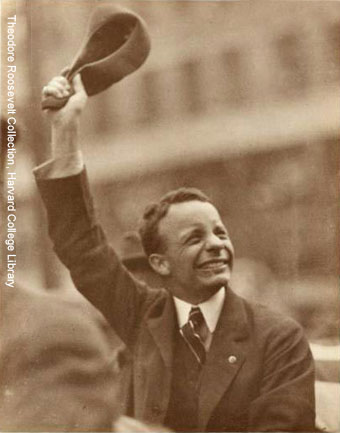
Kermit
(1889-1943)
Fame, adventure, heroism, and intrigue: the life of Kermit Roosevelt had all of these—and a hefty dose of tragedy, too. Born in 1889 in Oyster Bay, he was named for an uncle, brother to Edith, who had died in infancy.
Kermit was a sensitive and moody child; Edith called him the one “with the white head and the black heart.” He was close to his father and accompanied him on expeditions across the African plains and through the Brazilian wilderness. In the Amazon, exploring an uncharted river, Kermit saved Theodore’s life.
From youth, Kermit showed a bravery that neared recklessness. Like his brothers, he enlisted eagerly in WW I. Theodore expected martial valor from his sons, and they obliged.
Kermit also needed intense experience to pull him out of his own moods. Without it, especially after Theodore’s death in 1919, he struggled with depression and alcoholism. WW II seemed to offer another escape into peril, but drinking had ruined his health. Discharged from the British army and sent by the U.S. Army to remote Alaska, he committed suicide in 1943. In keeping with family custom, he was buried where he fell, in Fort Richardson National Cemetery, near Anchorage.
Kermit Roosevelt III
Great Grandson of Kermit
Author and Professor of Law
University of Pennsylvania Law School

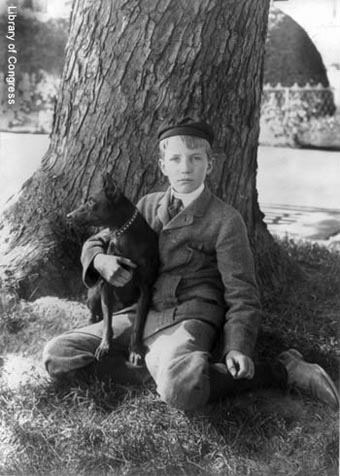
Ethel
(1891-1977)
Ethel Carow Roosevelt Derby, the fourth of T.R.’s six children, was a lifelong resident of Oyster Bay. She was the first of T.R.’s children to serve—as a nurse—in WW I. She was an active member of the Red Cross for over 60 years, one of the first two female trustees of the American Museum of Natural History, and the leading Roosevelt family proponent for the preservation of Sagamore Hill and its contents as a National Historical Site.
Ethel was an active participant in the Theodore Roosevelt Association, especially regarding matters concerning Sagamore Hill and the Theodore Roosevelt Collection of written materials (including correspondence, diaries, and original manuscripts of speeches, articles, and books) established at Harvard University in 1943. She was a devotee of 18th and 19th century American poetry (many works of which she could call upon from memory), a dedicated amateur botanist and ornithologist, and an active outdoor hiker well into her 80s.
Ethel and her husband Richard Derby (1881-1963) had four children: Richard Derby Jr. (1914-1922), Edith Roosevelt Williams (1917- 2008), Sarah Alden Gannett (1920-1999), and Judith Quentin Ames (1923-1973). Ethel is buried at Youngs Memorial Cemetery in Oyster Bay Cove with her husband and next to their son Richard. The inscription on the gravestone for Ethel Derby— “and all the trumpets sounded on the other side”—is from John Bunyan’s The Pilgrim’s Progress; Richard Derby’s inscription—”The Heavens filled with stars chanced he upon the way” —is from the poem “A Friend” by Lionel Johnson; and young Richard’s— “He, being made perfect in a short time, fulfilled a long time”—is from Wisdom of Solomon 4:13.
William Gannett
Grandson of Ethel
Lawyer and Historian

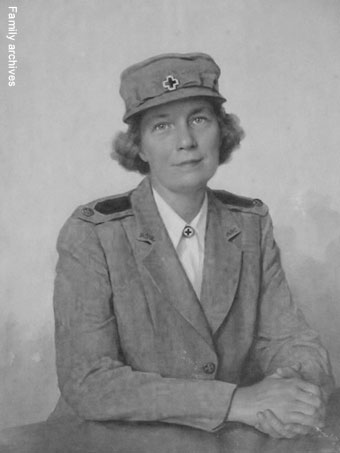
Archie
(1894-1979)
Archibald Bulloch Roosevelt, fifth child of T.R., perhaps considered his greatest achievement to be his military record. His love was the infantry, and he fought in the front lines in both WW I and WW II. In 1917, he volunteered for the Army and shipped out for Europe with his brothers, serving in the 1st Infantry Division, known to all as Big Red One. He was severely wounded, and it was feared he would die on the operating table. For his efforts, he was awarded two Silver Star Citations and, while still on the operating table, the French government’s Croix de Guerre. After Pearl Harbor, he wanted to see more action, but the Army deemed him too old. Not accepting this, he appealed to his cousin, Franklin D. Roosevelt, who granted his request. Archie was commissioned as a lieutenant colonel and in early 1943 was given command of the 2nd Battalion of the 162nd Infantry and shipped out to New Guinea, one of the worst theaters of the war, where again he served with distinction and had the honor of having a major battle location named after him—Roosevelt Ridge. Archie was again severely wounded, this time by a grenade, and thus become the only U.S. soldier in history to be 100% disabled in two wars. He was awarded his second and third oak leaf clusters to his Silver Star, as well as, of course, a Purple Heart and various campaign medals.
When not serving in the Army, Archie was a businessman. He worked for several firms, including the Bigelow Carpet Company and Sinclair Consolidated Oil Company, before starting the investment firm of Roosevelt and Cross, which specialized in municipal bonds and is still in operation. He also became heavily involved in various right-wing political movements, at one point taking on his alma mater Harvard for what he believed were its communist leanings.
He lived for most of his life in Manhattan House at 200 East 66th Street in New York City and in a pre-Revolutionary house on Turkey Lane in Cold Spring Harbor, not far from his childhood home at Sagamore Hill. He and his wife, Grace, had four children: Archibald Bulloch Jr., Theodora, Nancy Dabney, and Edith Kermit. Tragically, Grace was killed in an automobile accident while Archie was driving. He survived another eight years and is buried in Youngs Memorial Cemetery, his headstone noting, “The old fighting man home from the Wars.”
Tweed Roosevelt
Grandson of Archie
Chief Executive Officer,
Theodore Roosevelt Association

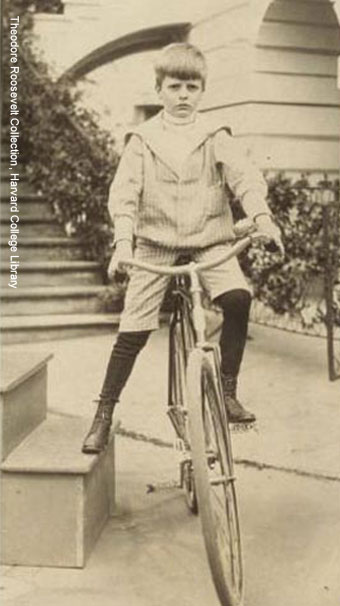
Quentin
(1897-1918)
Quentin Roosevelt was born to an already noisy household in 1897. At age 3, he became an avid participant in White House life, attended local schools, then Groton, and ultimately Harvard. In May 1917, newly engaged to be married, he left Harvard to join the 1st Reserve Aero Squadron and eventually the 95th Reconnaissance Squadron of the 1st Pursuit Group, honoring a mechanical and aviation interest he had acquired at a family visit in 1911 to an air show in Reims, France.
After training, he left to join the war effort in France, first at a training camp in Issoudun, then closer to the front at Romorantin. During this period, he forged a strong relationship with a local French family that endures between the two families to this day. Barely two weeks after his first combat flight, during a massive aerial engagement on July 14, 1918, at the start of the Second Battle of the Marne, Quentin was shot down and killed, buried by the Germans where he fell on a gentle hill above the little village of Chamery.
Every November 11 in Chamery, at a ceremony marking the end of WW I, Quentin’s name is read along with the other soldiers fallen in battle. In 1955, his remains were removed to the Normandy American Cemetery and Memorial, and placed next to his brother Ted.
Richard D. Williams
Grand Nephew of Quentin
